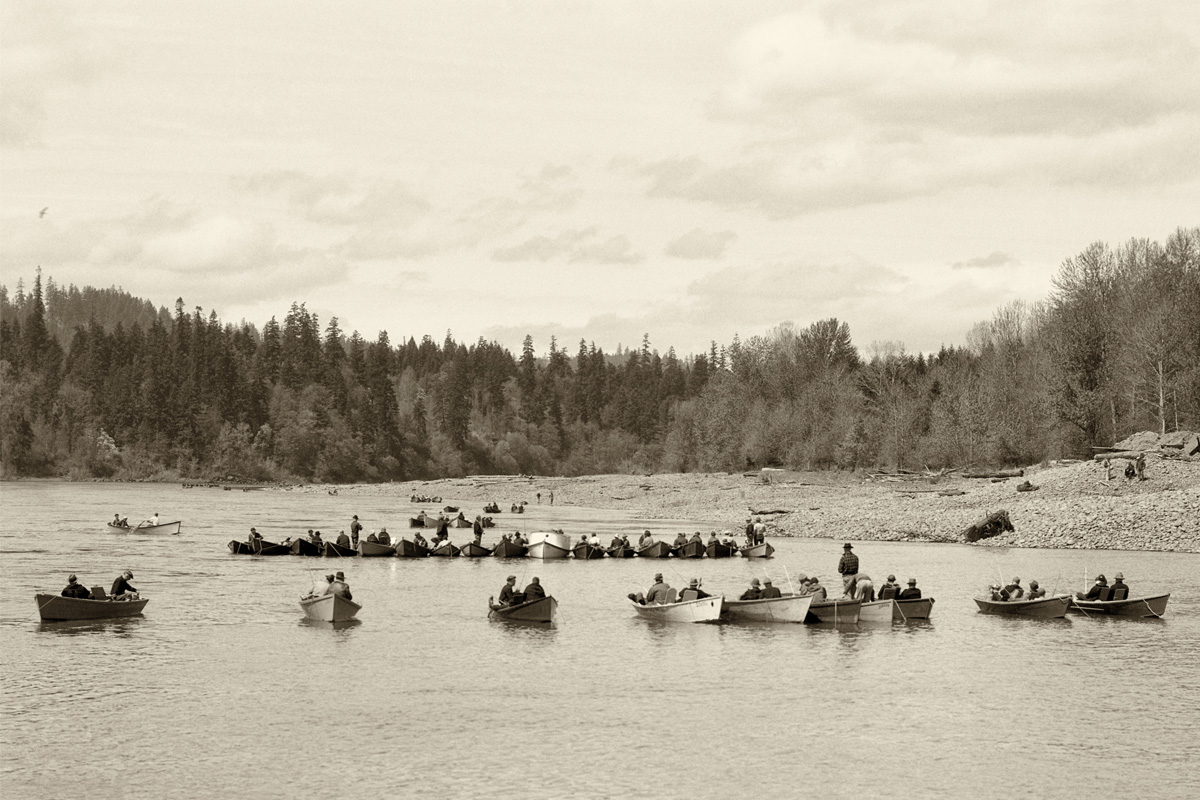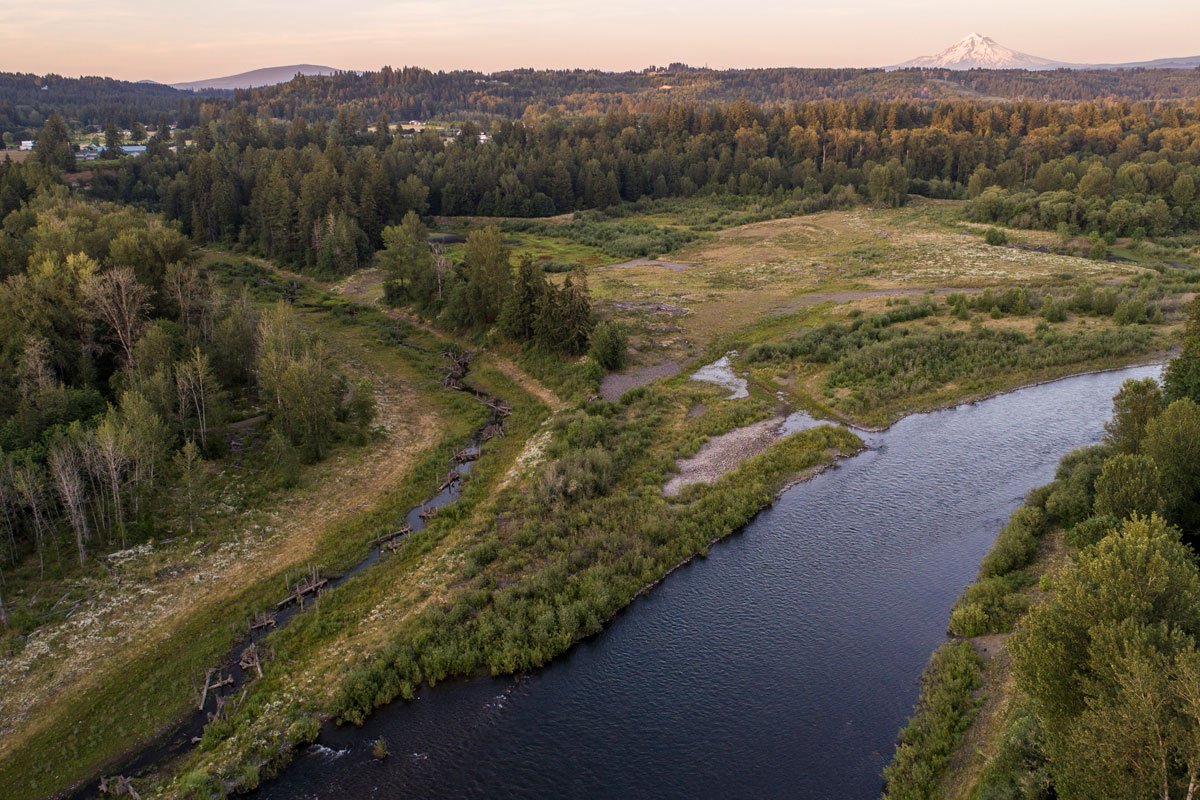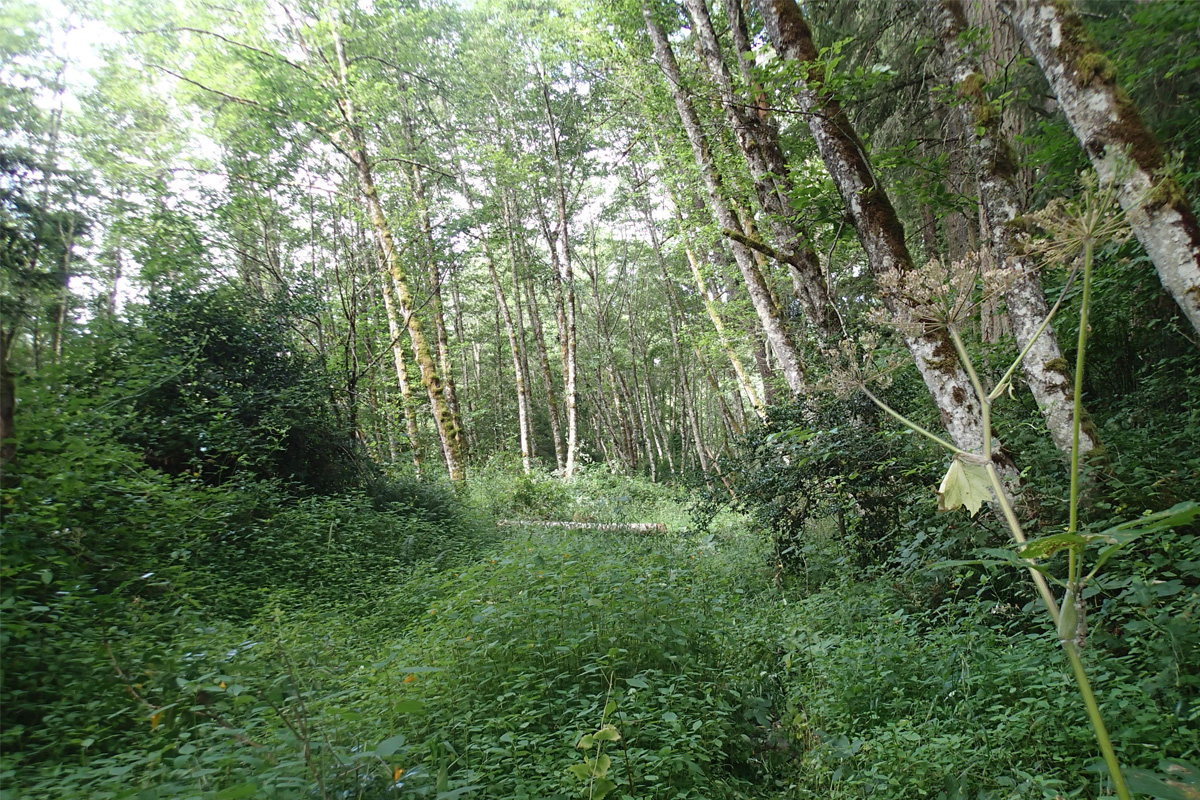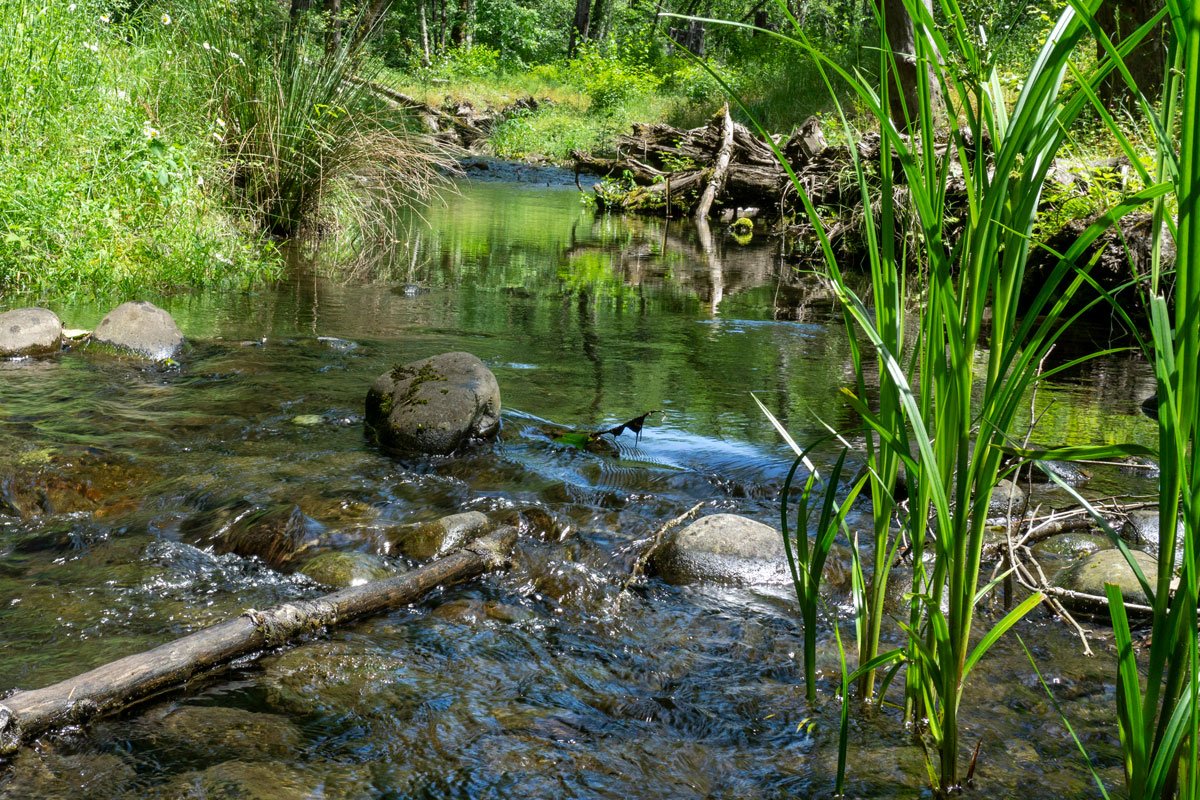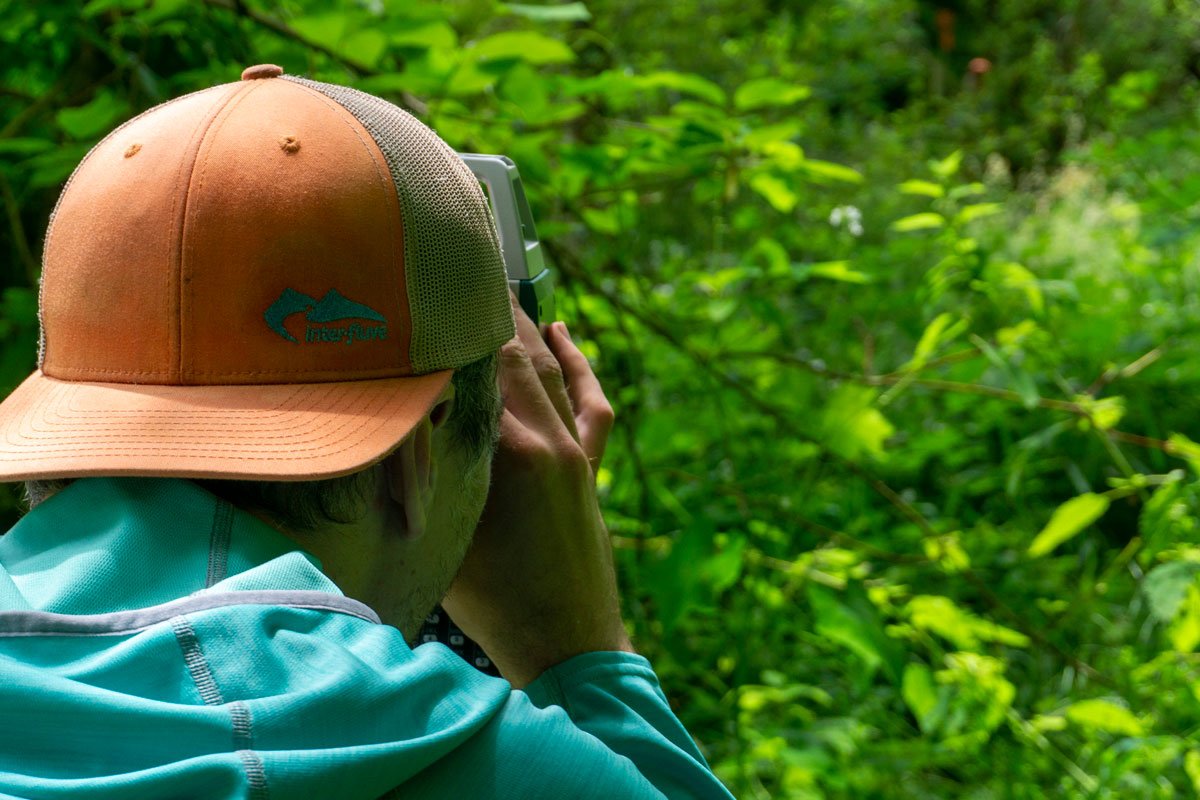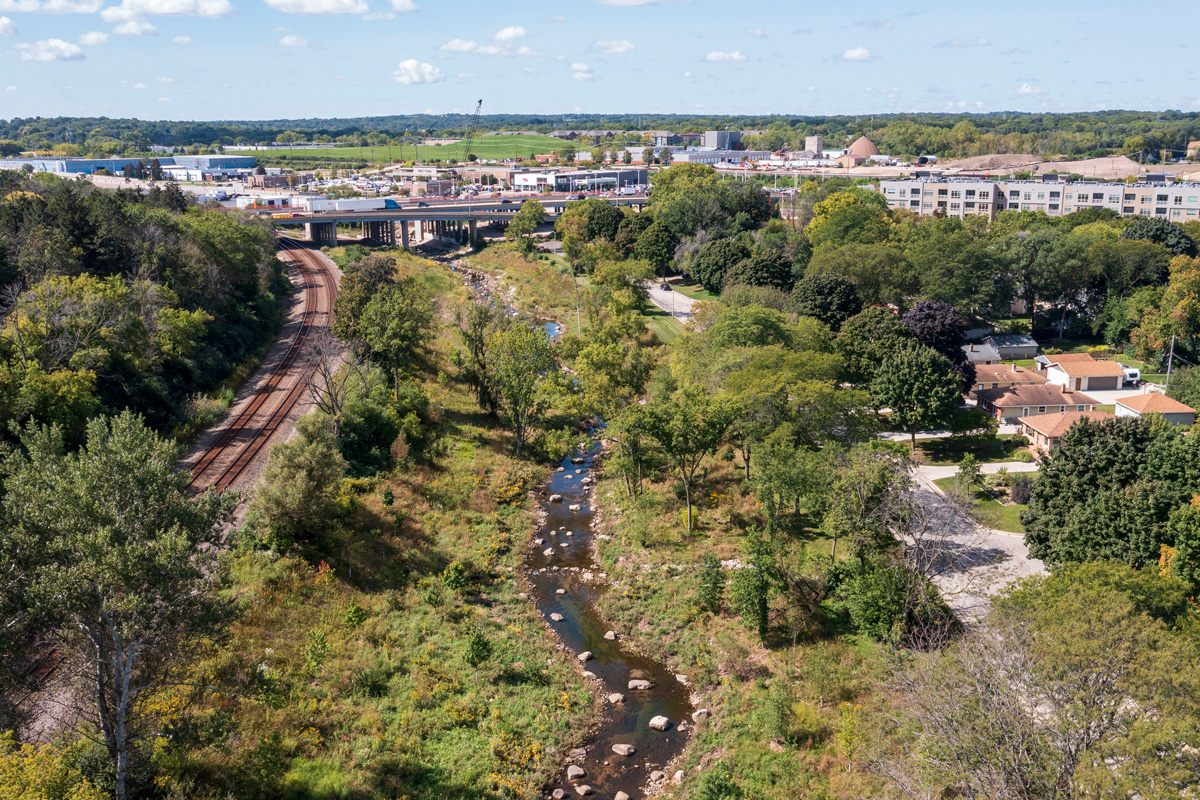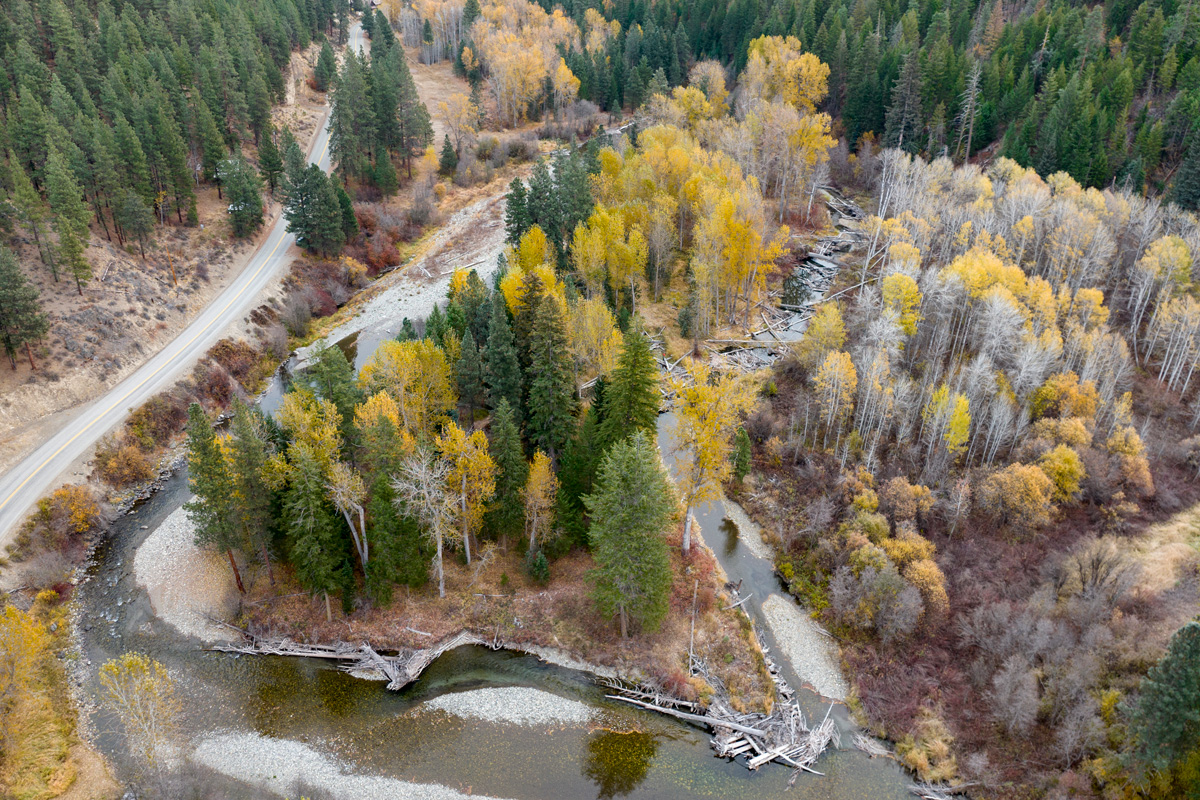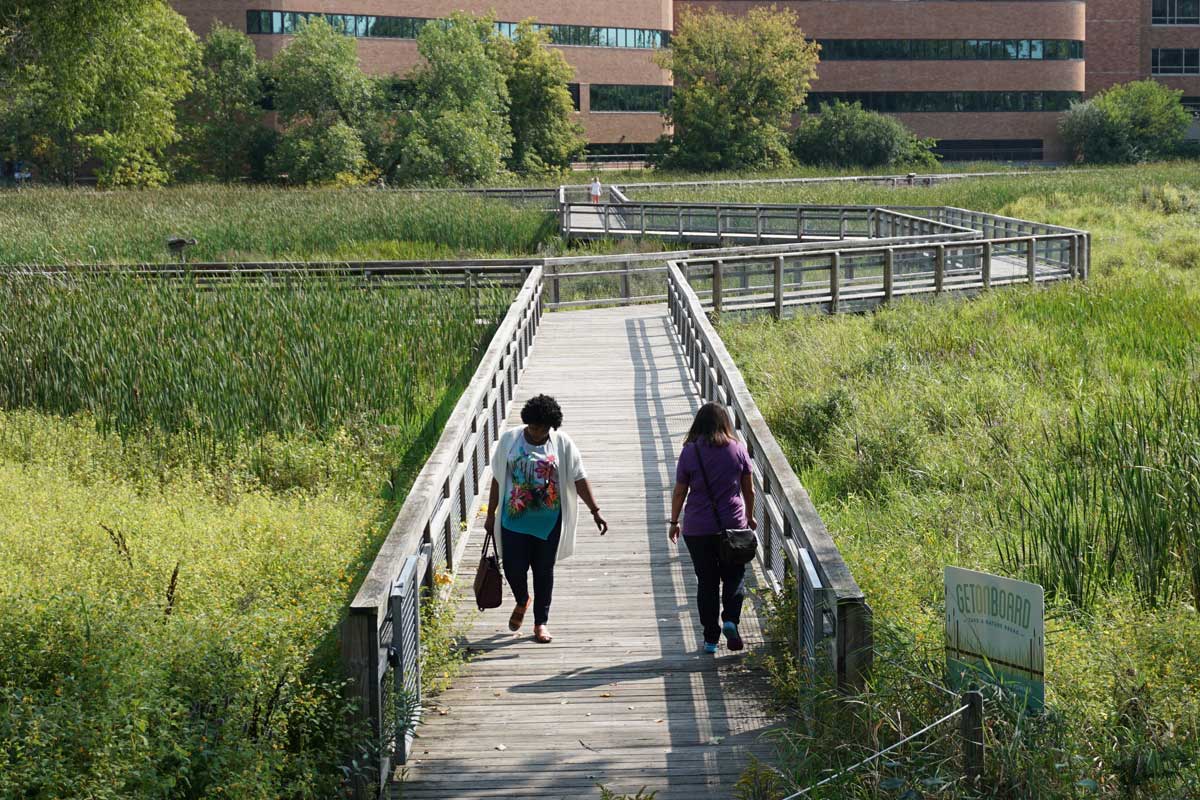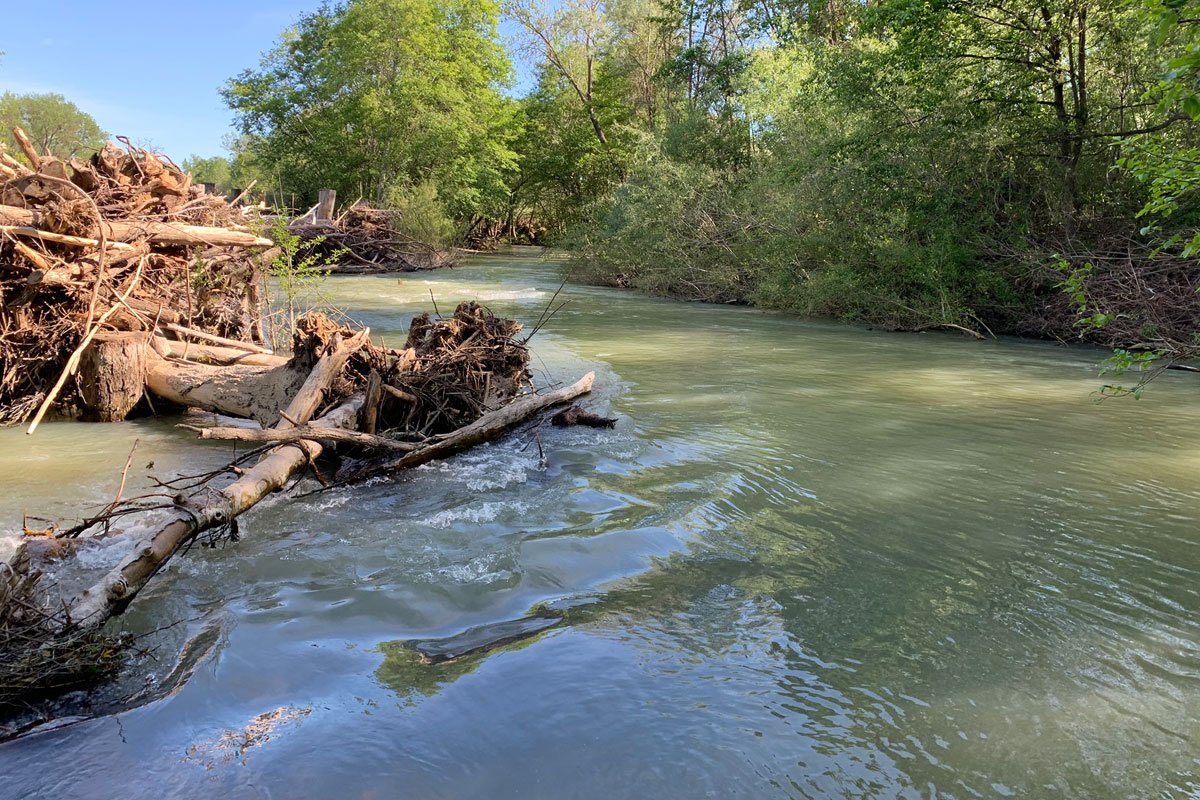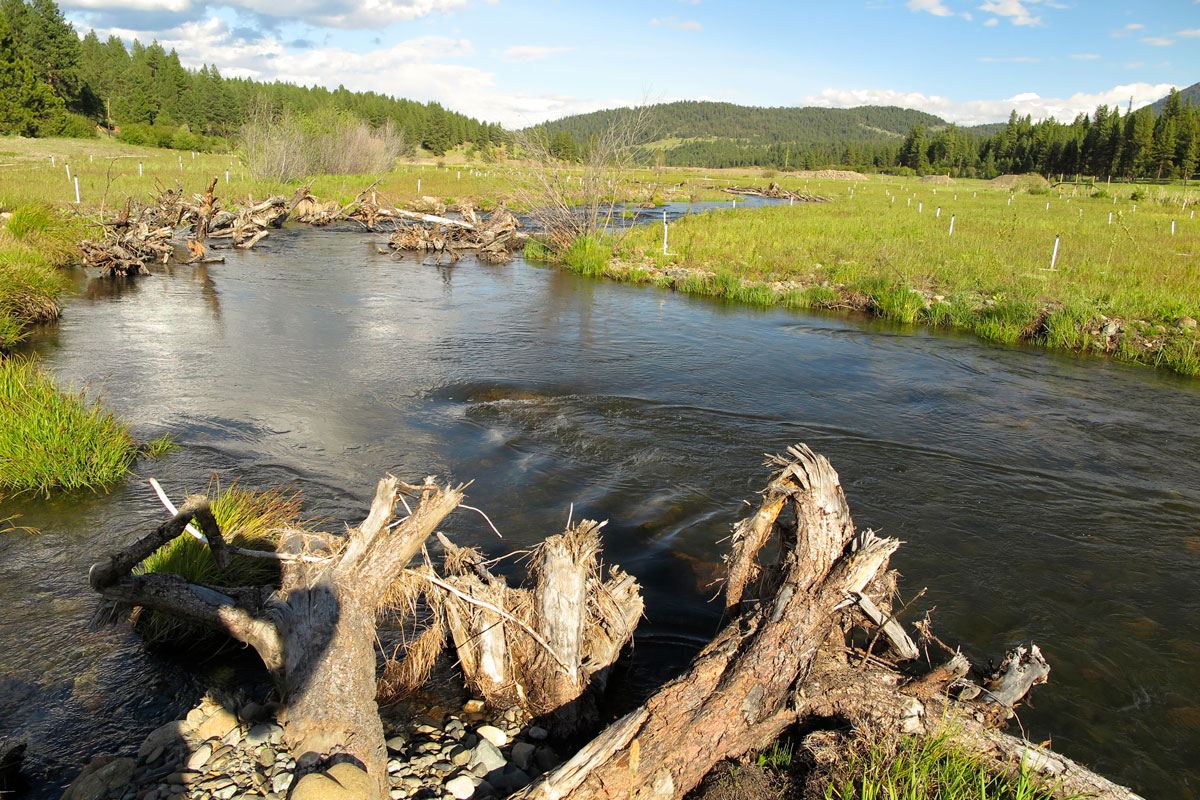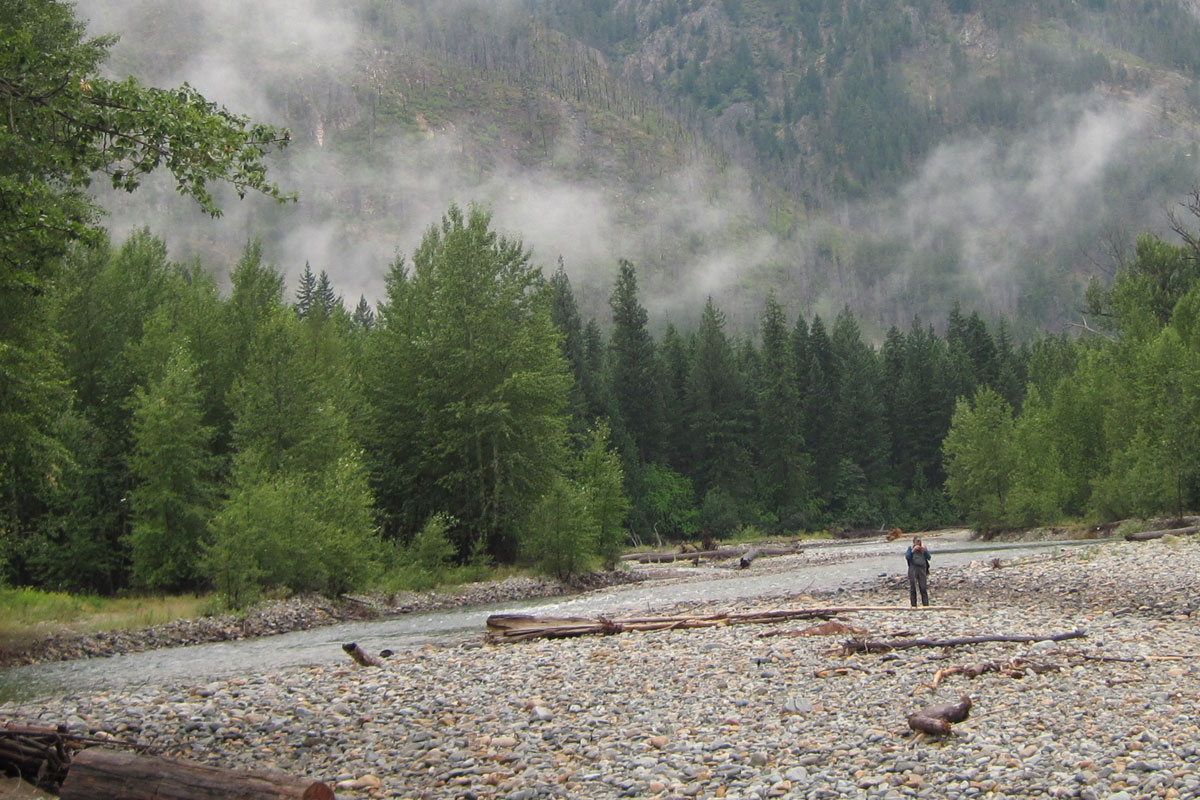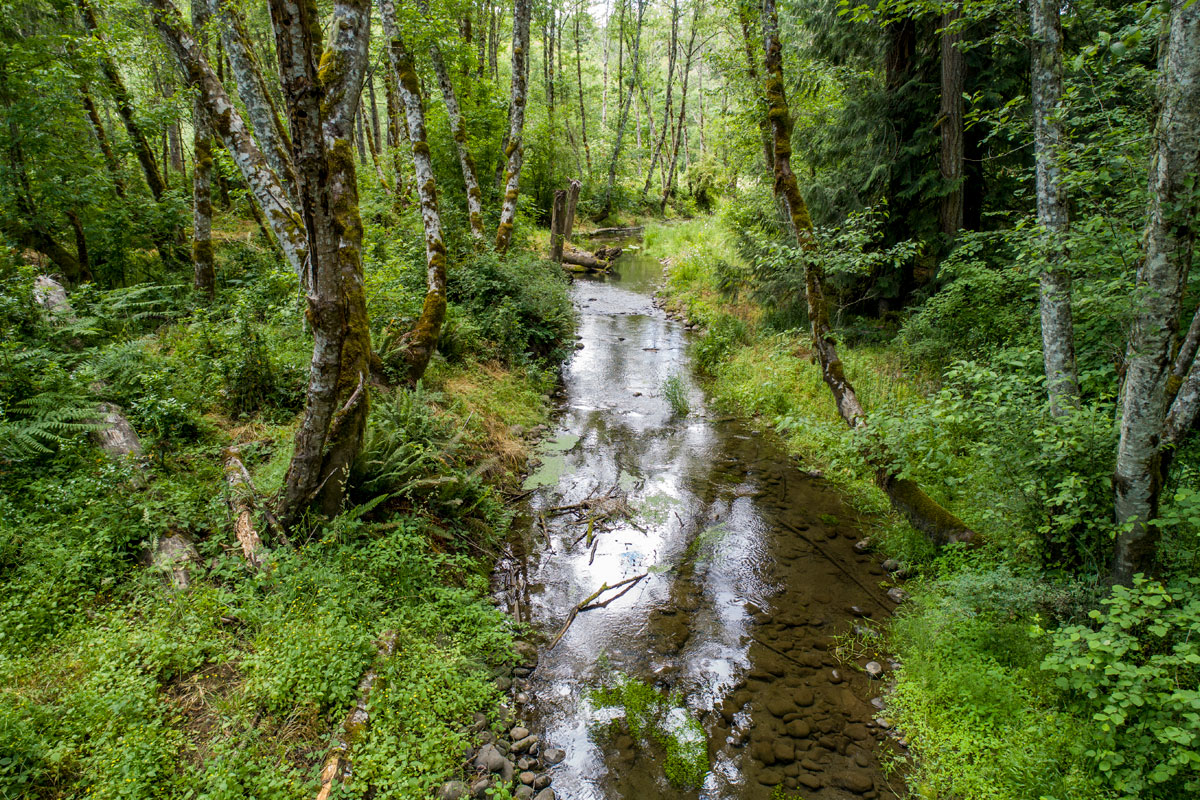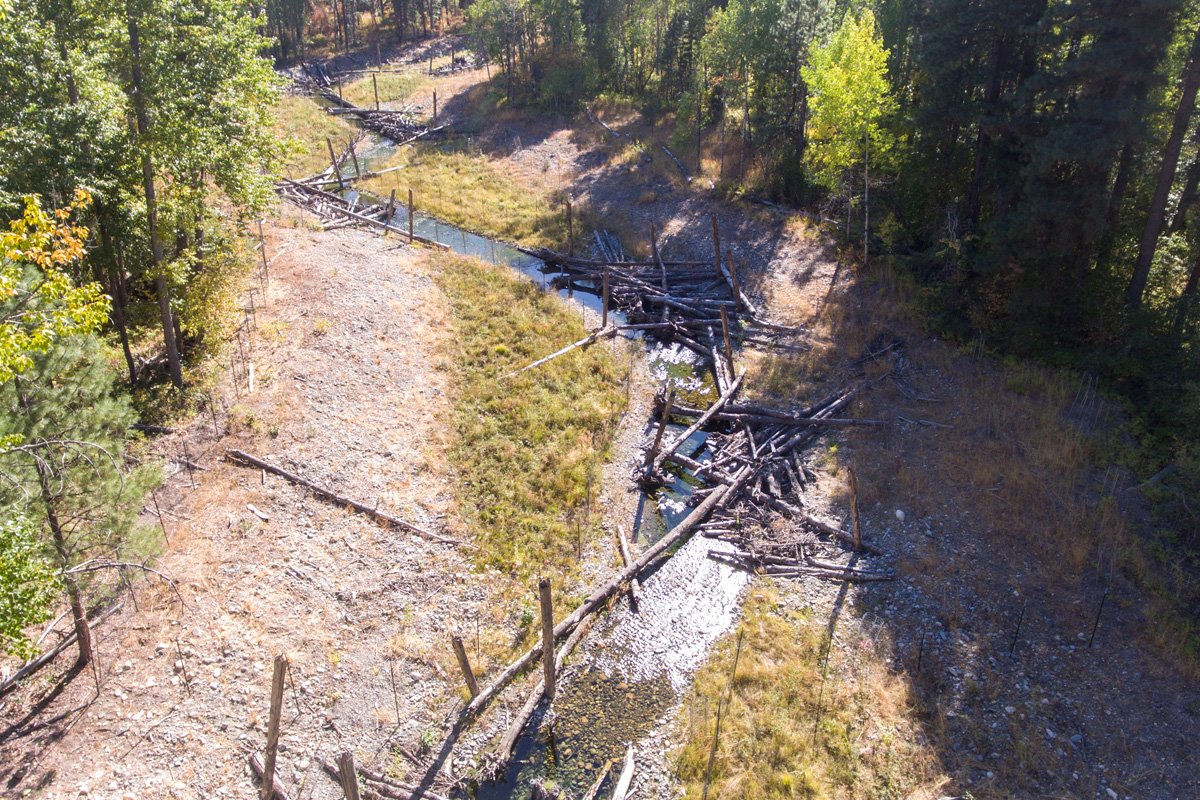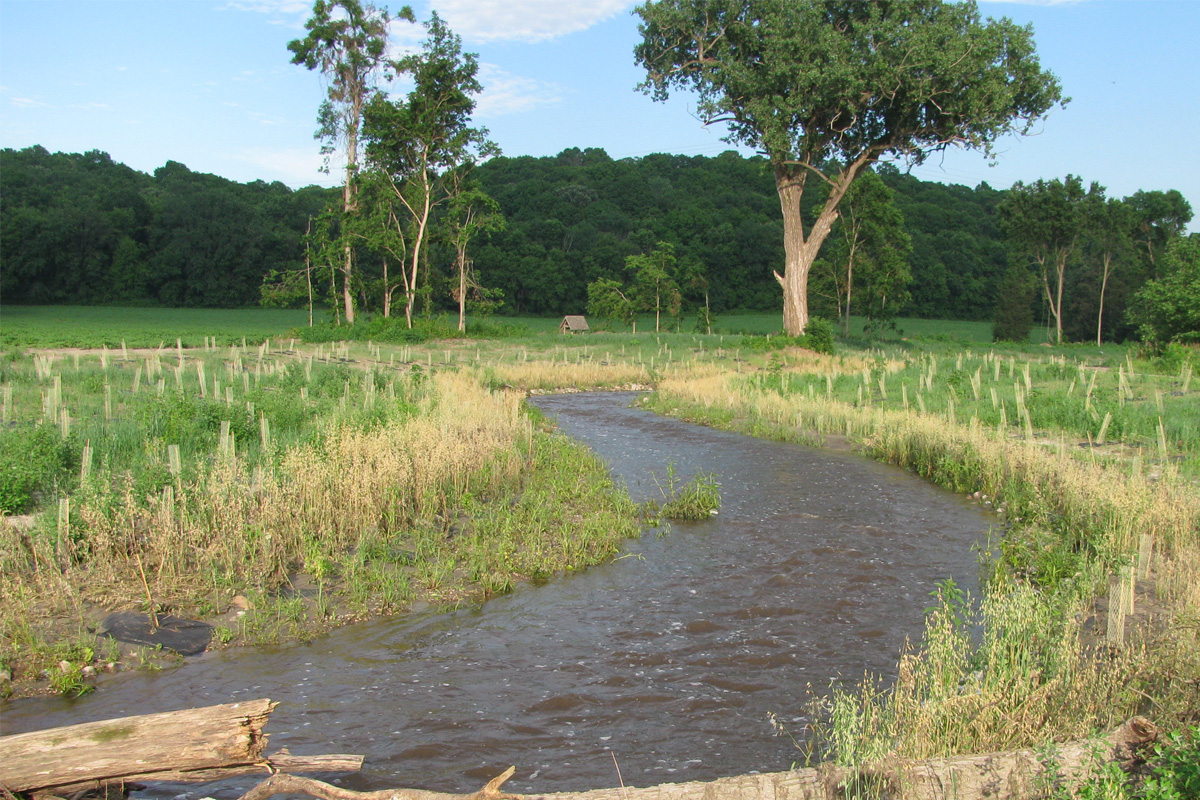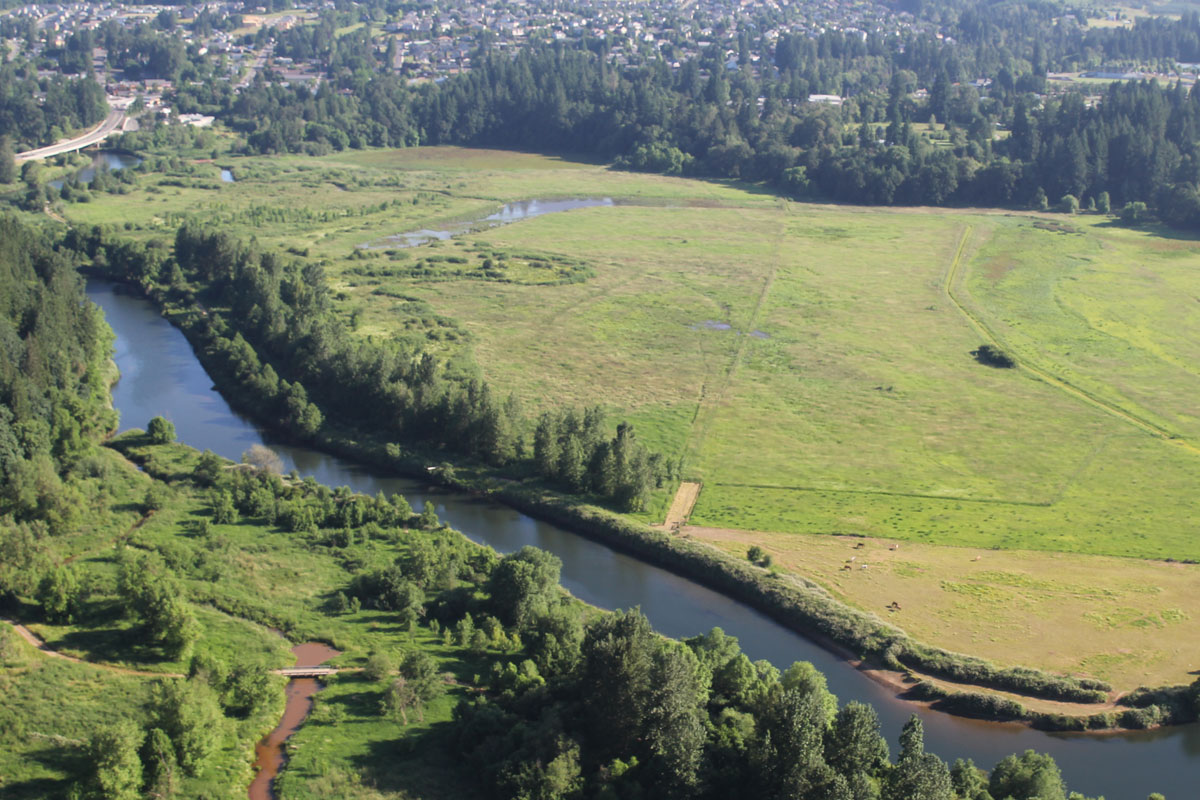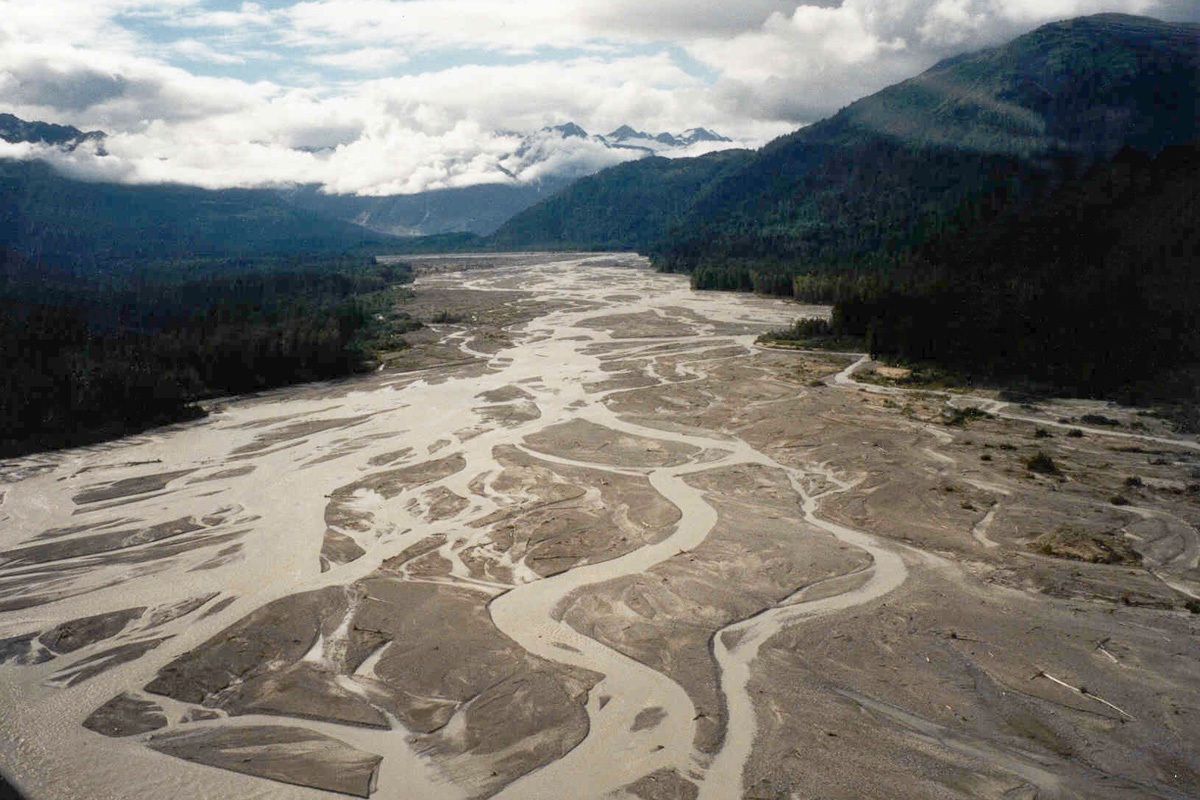Clackamas River Basin, Oregon
In 1877, Livingston Stone, employed by the U.S. Fish Commission to explore potential hatchery sites throughout the Columbia River Basin, professed that “probably no tributary of the Columbia has abounded so profusely with salmon in past years as this river (the Clackamas).” Unfortunately, over the next 150 years, salmon populations in the Clackamas plummeted as a result of overfishing, dams, logging, mining and habitat destruction.
Since 1996, Inter-Fluve has completed 22 projects on the mainstem Clackamas River and its tributaries aimed at recovering lost salmonid habitat. Projects have included a flood damage assessment following the 1996 100-year-flood, the $4 million dollar River Island Channel & Floodplain Restoration project, the design and construction of a 700-foot-long side channel and a groundwater-fed backwater channel at Milo McIver State Park, and development and implementation of a side channel monitoring plan. Below are examples of some of the work we’ve done throughout the Clackamas watershed.
In 1889, after a day of steelhead fishing on the Clackamas River, Rudyard Kipling proclaimed: “I have lived! The American continent may now sink under the sea, for I have taken the best of it, and the best was neither dollars, love, nor real estate.” Photo: Fishing at the mouth of the Clackamas River circa 1937. Credit: Courtesy of Old Oregon Photos (Original from Clackamas County Historical Society)
